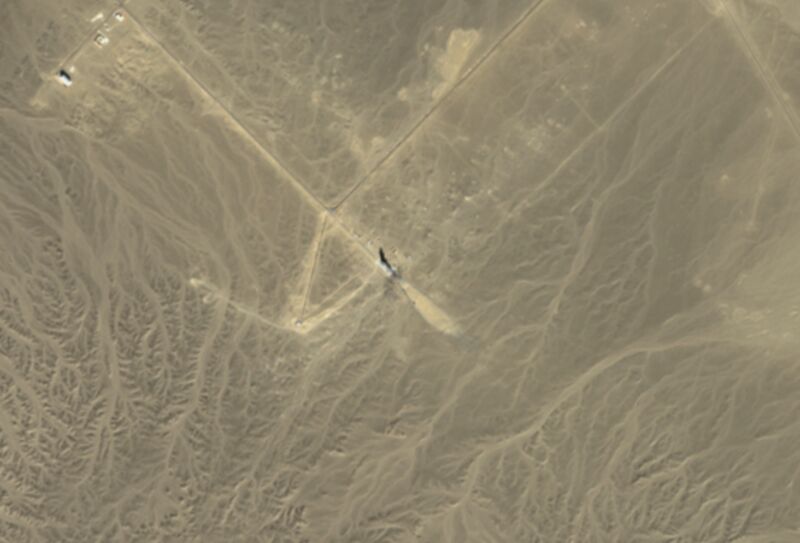
Welcome to Edition 6.21 of the Rocket Report!
Someone is always watching, and it’s more difficult than ever to hide bad news. This is one of my mantras as a reporter who will always come down on the side of transparency. We’ve seen space companies and government agencies in the United States try to downplay setbacks, which, let’s face it, are inevitable in the space business. In China, it looks like a recent test-firing of a rocket motor didn’t go well. Unsurprisingly, Chinese officials haven’t said a thing.
As always, we welcome reader submissions, and if you don’t want to miss an issue, please subscribe using the box below (the form will not appear on AMP-enabled versions of the site). Each report will include information on small-, medium-, and heavy-lift rockets, as well as a quick look ahead at the next three launches on the calendar.

Something exploded at a Chinese spaceport. A Chinese launch vehicle maker appears to have suffered an explosion at a test site at Jiuquan Satellite Launch Center, Space News reports. Satellite images show what are likely test stand facilities and the apparent aftermath of an exhaust plume from a hot fire test on the desert surface. Charred debris can be seen scattered across the surrounding area. The images were published on the social media platform X by Harry Stranger, who uses satellite imagery to track space industry developments. The facility is likely operated by the China Aerospace Science and Industry Corp. (CASIC), a state-owned enterprise that builds the solid-fueled Kuaizhou rocket.
Sleuthing for evidence … Stranger posted about the explosion on X and used satellite images from several sources to pinpoint the time of the explosion to some time on November 21 or 22. A similar explosion on the same test stand at Jiuquan occurred in October 2021. We can presume the explosion was likely related to a ground test of solid-fueled motors for the Kuaizhou 1A or Kuaizhou 11 rocket, which can haul payloads of several hundred kilograms to a metric ton into low-Earth orbit. The Kuaizhou rocket family is one of several small Chinese rockets in this lift class. Chinese officials haven’t acknowledged the explosion. It goes to show that you can’t hide an incident of this size. (submitted by Ken the Bin and martialartstechie)
The world’s spaceports are busier than ever. Led by SpaceX and China, the world’s launch providers have put more rockets and payloads into orbit so far in 2023 than in any prior year, continuing an upward trend in launch activity over the last five years, Ars reports. The flight of a SpaceX Falcon 9 rocket from Cape Canaveral, Florida, on November 22 was the 180th launch of 2023 to put its payload into orbit, eclipsing the mark of 179 successful orbital launches from last year. Global launch activity stagnated after the end of the Cold War, when Russia, and to a lesser extent the United States, cut back on their military space programs. For nearly 30 years, the record number of orbital launches in a calendar year stood at 129, a tally from 1984. In 2005, only 52 rockets made their way into orbit.
No turning back? … SpaceX has launched 89 times so far this year, with 87 successful flights to reach orbit. Chinese rockets are 53-for-54. At this rate, SpaceX is on track for around 100 launches this year, with about 200 orbital missions worldwide. You can bet on more than 200 launches in 2024 if SpaceX achieves its goal of flying 12 times per month, which would give the company 144 launches during the course of the year. China’s launch tally next year will likely be similar to this year’s number.
New money for rocket propulsion startup Ursa Major. At a time when economic conditions are making it harder for startups to raise money, Ursa Major’s announcement this week of $138 million in fundraising got our attention. Ars discussed the plans for this Colorado-based company in last week’s Rocket Report, when Ursa Major’s CEO said the startup sees an opportunity to use 3D printing to disrupt the industry that produces solid rocket motors for military and spaceflight applications. Since then, Ursa Major revealed Series D and D-1 fundraising rounds that brought in $138 million from venture capital firms and institutional investors.
Funding Lynx … Ursa Major says this new funding will go toward the company’s Lynx solid rocket motor program, which will use advanced manufacturing techniques to produce rocket motors ranging in size from 2 inches to 22.5 inches in diameter. Rocket motors of this size can be used in a variety of military missiles, such as air defense units and Stingers, that currently face bottlenecks in production that struggle to meet demand from the US military and allies. Ursa Major is also working on the 50,000-pound-thrust Ripley engine for sale to developers of small commercial launch vehicles, and Draper, a storable liquid engine designed to defend against hypersonic weapons. (submitted by Ken the Bin)








